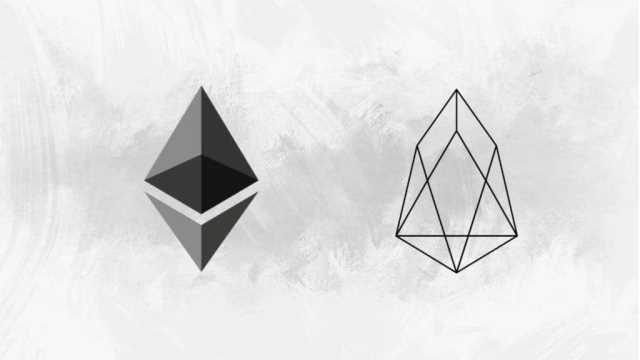Off-chain order books often offer lower fees than on-chain order book DEXs, but they don’t, however, have the same degree of decentralization as rival DEXs. The wallet should also contain the crypto asset you’ll use to buy another coin. Ensure you have enough ETH to cover transaction fees if you’re using an Ethereum-based DEX. But before explaining what an AMM is, it’s important to understand how market making on centralized exchanges works. Next, connect it to your cryptocurrency wallet, which has some tokens in it to swap. We have provided a more detailed answer in this guide; scroll to the section on how to use a DEX for more details.
- They will deposit their ETH into a liquidity pool maintained in a DEX and receive USDT back.
- There’s still a significant need for CGMs in the long run, so you might want to consider buying shares of DexCom right now, while it’s at a lower valuation.
- Off-chain order book DEXs are still decentralized in some regards, but they’re admittedly more centralized than the previous entry.
- This is arguably the most transparent approach, as you’re not trusting a third party to relay the orders to you, and there’s no way to obfuscate them.
What Are the Benefits of Decentralized Exchanges?
- However, Forbes Advisor Australia cannot guarantee the accuracy, completeness or timeliness of this website.
- Hence, DEXs have emerged with the aim of reducing systemic centralization risks in the crypto space.
- Creating an account on a major centralized exchange is a fairly straightforward process, and it functions much like banking and brokerage applications that users are familiar with.
- While bet-on-anything apps have their detractors, Vega’s upgrade underscores the increasing enthusiasm around prediction markets as a potential breakout use case for blockchain technology.
- This could be a growing category as phones become more powerful and workplaces more mobile.
DeX is also limited to mobile apps, which may have less functionality than desktop apps, and there are no browser extensions like ad-blockers or password managers. Fees aren’t always higher on DEXs, but they can be, particularly when the network is congested or if you’re using an on-chain order book. However, with the rapidly-evolving stack of technologies available, a growing number of tools for decentralized trades have emerged.
Automated market makers (AMMs)

As with other DEX models, an on-chain transaction must occur to settle any trade. As opposed to some DEXs, AMMs tend to be relatively user-friendly and integrate with popular cryptocurrency wallets. Decentralization is a fundamental philosophy of blockchain technology and the crypto space.
Smart Contract Vulnerabilities
A CEX like Binance focuses on providing user-friendly experiences for all kinds of users. Newcomers to crypto have access to simple conversion tools like Binance Convert, while experienced traders can use the Spot Exchange’s TradingView tools. A CEX will also likely have detailed guides as part of its services (Binance Academy is one example).
How Decentralized Exchanges Work
With off-chain order books, all of this happens elsewhere, with only the final transaction settled on the blockchain. Since orders aren’t stored on-chain, this method can run into some of the security issues of centralized exchanges but isn’t as slow or costly as on-chain order books. These approaches are superior from a usability perspective than those that rely on on-chain https://www.tokenexus.com/ order books. They don’t face the same constraints in terms of speed, as they don’t use the blockchain as much. Still, the trade must be settled on it, so the off-chain order book model is still inferior to centralized exchanges in terms of speed. In this article, we’ll take a dive into decentralized exchanges (DEXs), trading venues where no intermediaries are required.
What Is a Decentralized Exchange (DEX), and How Do DEXs Work?
More often than not, that platform will be a centralized exchange serving the same role that banks and conventional stock exchanges do. In it, you will learn what DEXs are, how to differentiate between the available types, how they work, and how to use them. Additionally, the guide also offers some benefits and drawbacks to using these exchanges. What is DEX Decentralized exchanges are still in their infancy, but are already revolutionizing the crypto exchange space and how traders interact. Nevertheless, DEXs still tend to offer roughly the same prices for assets as CEXs. This is because attentive traders or bots can quickly profit from any discrepancy in prices through arbitrage.

As DEXs become increasingly popular, many crypto traders have been left with a variety of frequently asked questions regarding their use. Appropriate research can provide answers to common questions such as wallet compatibility, currency support, and which DEX is the best fit for specific needs. Changelly DeFi Swap enables 3600+ token swaps on the Ethereum, Binance Smart Chain, Polygon, Fantom, Avalanche, and Optimism networks.
While you’re likely using a DEX for its advantages, it’s important to keep those risks in mind. Perhaps most importantly, remember that decentralized exchanges are, for all intents and purposes, operating off the radar and outside of regulatory authorities. With a decentralized exchange, a blockchain, or distributed ledger, takes the place of the third party.
Additional transaction fees
It also acts as a DEX order book, without requiring a central authority. Aggregators offer a win-win proposition whereby low liquidity DEXs benefit from their service, and users enjoy fast transaction speeds at reduced costs. However, the chances of this happening are minimized on the blockchain since the record is publicly available.